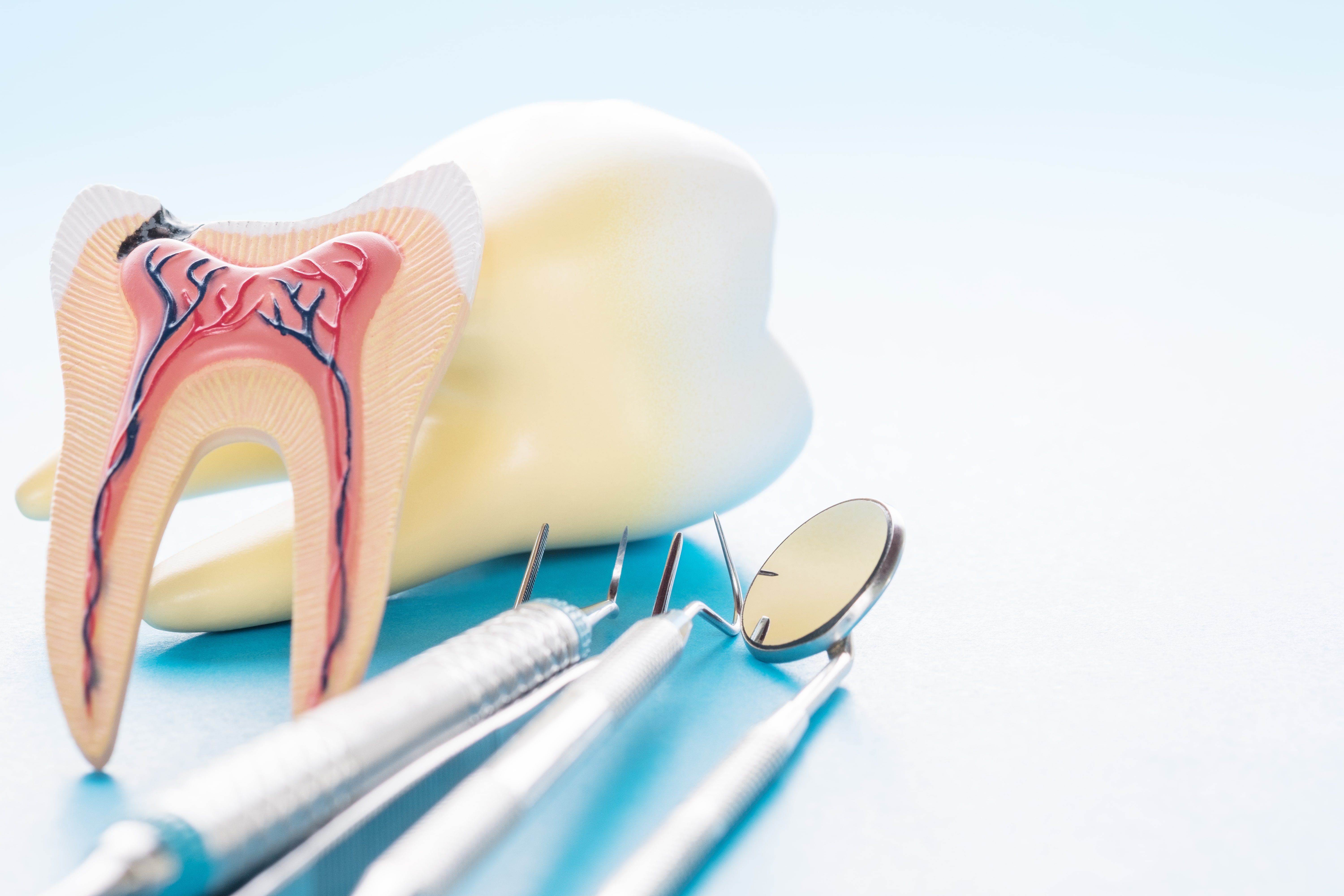Dentist | 10 min read
Root Canal: Procedures, Sign, Risks and Treatment
Medically reviewed by
Table of Content
Key Takeaways
- When the root canal of a tooth gets infected, this treatment is the only option to save the tooth
- Leaving a root canal infection untreated can be very painful and can cause a lot of problems over time
- The cost to treat a root canal infection depends on the city and the medical institution it is availed at
When it comes to dental treatments, the root canal is one that strikes fear into the hearts of many. This is mainly due to the fact that it is known to be an extremely painful and uncomfortable procedure. However, this isn’t true at all, and when the root canal of a tooth gets infected, this treatment is the only option to save the tooth. Moreover, a good root canal dentist will also ensure to make this procedure completely painless.
However, to truly rid yourself of any doubts or uncertainties you may have about root canal treatment (RCT), it pays to know all you can about it. With a better understanding of the reason for getting an RCT, the procedure involved, and how to get through recovery, you are better prepared for root canal of teeth.
Remember, leaving a root canal infection untreated can be very painful and can cause a lot of problems over time. The infection can further spread to other parts of the body and in some cases, even become life-threatening. To ensure you’re prepared for an RCT procedure, should you ever need one, here’s all you need to know.
What is Root Canal Infection?
Firstly, it is important to note that the root canal isn’t a treatment, but a part of the tooth. This is the hollow section that contains the pulp. It is made up of blood vessels, nerve tissue, and other cells. This pulp is responsible for nourishing the tooth and the nerves in the pulp are responsible for detecting temperatures. A root canal infection occurs when this pulp inside the tooth gets infected or diseased. Since it cannot repair itself, the tissue inside dies and it must be removed so that the infection doesn’t spread.
This is when root canal treatment or endodontic therapy comes into play. Here, a root canal dentist removes the irritated pulp and nerve to save the tooth. The dentist also cleans the inside and seals it to avoid any further damage or penetration of bacteria that may harm the tissue.
Signs You Need a Root Canal
There are many signs that you may need a root canal and the most obvious one is prolonged pain. If you feel pain when biting or chewing, it is likely that you have a root canal infection that requires immediate treatment. Do not hesitate to get your tooth treated as delays will only increase health complications.
Here are other signs that suggest you need an RCT procedure or should visit a dentist immediately.
Pimples on gums
Pimples on the gums indicate that you need a root canal treatment because it is an infection. The root canal is the space inside the tooth that contains the pulp. The pulp is made up of blood vessels, nerves, and connective tissue. When the pulp becomes infected, it can cause pain, swelling, and abscesses. A root canal procedure is necessary to remove the infected pulp and save the tooth.
Cracked teeth
A chipped or cracked tooth can be a sign that you need a root canal treatment. When your tooth's enamel is damaged, it can expose the dentin, which is the layer of your tooth beneath the enamel. The dentin is softer than the enamel and can be easily damaged. Once the dentin is damaged, it can lead to sensitivity and pain. If you have a chipped or cracked tooth, you should see your dentist as soon as possible to determine if you need a root canal treatment.
Darkened gums
Gum discoloration is one of the most common signs that you may need a root canal treatment. When the nerves and blood vessels inside your gums become damaged or infected, it can cause them to get darkened. A root canal treatment is necessary to remove the damaged or infected tissue and to save the teeth.
Sensitive teeth
Sensitivity to heat and cold that needs root canal treatment can be a symptom of damage or infection to the pulp of the tooth. During root canal treatment, the damaged or infected pulp is removed from the tooth, and the inside of the tooth is cleaned and sealed. This helps to save the tooth and prevent further damage or infection.
Swollen gums
If your gums are swollen, it could be a sign that you need root canal treatment. The swelling is caused by an infection in the tooth root. If the infection is not treated, it can spread to the rest of the tooth and eventually to the jawbone. A root canal treatment will remove the infected tissue and clean out the inside of the tooth so that it can heal properly.
Swollen jaw
Swollen jaw is a common sign that you may need a root canal treatment. The swelling may be due to an infection in the tooth or surrounding tissues. If you have a swollen jaw, you should see your dentist as soon as possible for an evaluation.
Pain when pressure is applied
Pain, when pressure is applied is a sign that you need a root canal treatment. The pulp of your tooth is infected, and this infection has spread to the root. A root canal treatment will remove the infected pulp and clean the root canal. This will relieve the pain and pressure you are feeling.
Loose tooth
A loose tooth is a sign that you may need a root canal treatment. When the roots of your teeth are damaged, they can become loose and fall out. If you have a loose tooth, it's important to see your dentist right away to determine if you need a root canal treatment.
How to Prepare for Root Canal Treatment
Preparing for a root canal is similar to preparing for any other dental procedure. Be sure to brush and floss your teeth thoroughly before your appointment. You should also plan to arrive at your appointment on time and with any necessary paperwork completed. To prepare for root canal treatment, you should:
- Brush your teeth twice a day with fluoride toothpaste
- Floss daily
- Eat a balanced diet
- See your dentist regularly for check-ups
Procedure For Root Canal Treatment
A root canal is a treatment used to repair and save a tooth that is badly decayed or infected. During a root canal procedure, the tooth's damaged or infected pulp (core) is removed, and the inside of the tooth is cleaned and sealed. If you need a root canal, your dentist will refer you to an endodontist, who is a specialist in this type of treatment. Preparing for a root canal is relatively simple. You will need to have a consultation with the endodontist to discuss the procedure and to make sure that the treatment is suitable for you.
During the consultation, the endodontist will take X-rays of your tooth to determine the extent of the damage. You will also be asked about your medical history and any medications that you are taking. You will need to have a few basic things in place before you can have a root canal. First, you will need to have a good oral hygiene routine in place. This means brushing and flossing your teeth regularly.
Once the root canal dentist recommends an RCT to save the tooth, here’s the procedure you can expect to undergo.
- The dentist will apply numbing medication to the gum near the affected tooth
- Once the area is numb, the dentist will administer an anaesthetic into your gums via injection
- You will feel no pain and the dentist will start by making openings in the tooth
- With the pulp exposed, the specialist will then remove the infected pulp with files
- The dentist will then begin to start cleaning the canal
- Once the canal is cleaned, the area is coated with antibiotics to prevent infection
- The dentist then seals the tooth with root canal filling material known as gutta-percha
- After sealing it, a temporary filling will be put to prevent damage via saliva
This is when the major portion of the procedure takes place. Once the first session is over, you will be asked to see your doctor again after a few days. This is the recovery stage and is usually when you can expect to experience pain. However, over the course of a few days, this pain will fade. During the second part of the procedure, the root canal dentist will perform an X-ray of the area and confirm that the infection is dealt with. Once confirmed, the temporary filling is removed and a permanent filling is placed over the area. At this stage, you may also opt for a crown.
Risks of Root Canal
Root canals can be risky business. While they are often necessary to save a tooth, they can also lead to infections and other complications. Here are some of the risks associated with root canals:
Infections:
One of the most common complications of root canals is infection. This can occur if the bacteria from the infected tooth gets into the bloodstream.
Abscesses:
An abscess is a pocket of pus that forms around the infected tooth. This can cause serious pain and swelling.
Nerve damage: If the nerve in the tooth is damaged during the root canal, it can lead to numbness, tingling, and pain.
Bleeding:
Some people may experience bleeding during or after a root canal. This is usually not serious and will stop on its own.
Allergic reactions:
Some people may be allergic to the materials used during a root canal, such as the anesthesia or the filling material. This can cause itching, swelling, and other symptoms.
If you are considering a root canal, talk to your dentist about all the risks and benefits.
Is a Root Canal Treatment Painful?
As mentioned earlier, you experience no pain during an RCT mainly due to the fact that you’re under local anaesthesia. Any pain felt is only before, due to the infection as an RCT is a pain-relieving procedure. However, you will experience tenderness and pain after the effect of the anaesthesia fade. You may not be able to chew on that side of mouth for a while, but this pain can be controlled with over-the-counter medication.
Root Canal Treatment Cost
The cost to treat a root canal infection depends on the city and the medical institution it is availed at. However, in India, this cost can range anywhere between Rs.1,500 and Rs.12,000. This cost is also dependent on the severity of the infection and the position of the tooth.
Advantages of Having Root Canal Procedure
There are many advantages to having a root canal procedure. Perhaps the most obvious is that it can save your tooth. If the tooth is badly damaged or infected, the root canal can remove the damaged tissue and allow the tooth to heal.
Another advantage of a root canal is that it can relieve pain. If the tooth is causing you pain, the root canal can remove the source of the pain and help you feel better.
Finally, a root canal can help prevent further damage to the tooth. If the tooth is not treated, the damage can spread and lead to more serious problems. You can avoid further damage and keep your tooth healthy by having a root canal.
Failed Root Canal Symptoms
There are a few common failed root canal symptoms that you should be aware of. If you have any of these symptoms, you must see your dentist immediately.
- The first symptom is pain. If you're experiencing pain in the tooth that has had a root canal, it's possible that the root canal has failed. There can also be a pain in the surrounding teeth
- Another common symptom is sensitivity to hot and cold temperatures. This can be a sign that the root canal has not been successful in sealing off the tooth
Other symptoms include:
- Swelling in the gums
- Drainage from the tooth
- A bad taste in your mouth
Root canals are usually successful, but in some cases, they can fail. If you think you may have a failed root canal, don't delay in getting treatment.
Root Canal Prevention Tips
Root canal prevention should be prioritised over all else. Here are a few tips you should keep in mind and practice.
- Brush your teeth regularly, especially before bed
- Get your teeth checked regularly
- Follow a healthy diet and avoid overly sugary foods and beverages
- Floss regularly to control plaque build-up
- Use a toothpaste with fluoride content
Understanding why you need an RCT and what the procedure is for it helps clear doubts and possibly eradicates the fear of it. Remember, a good root canal dentist will always prioritize your comfort and, when done right, there is almost no pain involved during the procedure whatsoever. This is why it is important to pick the right doctor, even if you’re going in to get the root canal filling replaced. Thankfully, with Bajaj Finserv Health, you can select the best dentists.
Your search for top orthodontists and dentists for root canal procedures ends with Bajaj Finser Health. You can view a list of top dentists and orthodontists near you in your city. You can also book an online appointment or opt for an in-clinic appointment at your convenience. In doing so, you get access to exciting discounts and deals from empanelled healthcare partners. These benefits and others like it are just one step away.
References
- https://www.medicalnewstoday.com/articles/142780#who_needs_it
- https://www.webmd.com/oral-health/guide/dental-root-canals#1
- https://www.healthline.com/health/root-canal
- https://www.healthline.com/health/root-canal-infection#causes
- https://www.medicalnewstoday.com/articles/142780#how_painful_is_it
- https://www.medifee.com/treatment/root-canal-treatment-cost/
Disclaimer
Please note that this article is solely meant for informational purposes and Bajaj Finserv Health Limited (“BFHL”) does not shoulder any responsibility of the views/advice/information expressed/given by the writer/reviewer/originator. This article should not be considered as a substitute for any medical advice, diagnosis or treatment. Always consult with your trusted physician/qualified healthcare professional to evaluate your medical condition. The above article has been reviewed by a qualified doctor and BFHL is not responsible for any damages for any information or services provided by any third party.



